Грамматика в контексте: новый подход к обучению грамматике английского языка
Муниципальное бюджетное образовательное учреждение гимназия
г.Урай Тюменской области
Грамматика в контексте:
новый подход к обучению грамматике
английского языка
Подготовила
учитель английского языка
Малюева Ирина Анатольевна
г.Урай
2012 г.
Грамматика в контексте: новый подход
к обучению грамматике английского языка
Обучение грамматике – один из важнейших аспектов обучения иностранному языку, так как полноценная коммуникация не может происходить при отсутствии грамматики. Нет сомнения, что знание грамматических правил необходимо для успешного владения языком. Но неизменный вопрос последних лет – должны ли мы обучать правилам в упражнениях? Не лучше ли учащимся интуитивно осваивать грамматику в процессе коммуникативной деятельности, вместо того чтобы изучать ее через специальные упражнения, направленные на усвоение того или иного правила?
Проработав много лет в школе, я пришла к выводу, что нельзя однобоко подходить к обучению грамматике ИЯ.
Процесс овладения грамматической компетенцией волнует и преподавателей иностранного языка, и методистов, разрабатывающих различные грамматические пособия.
Двойственное определение грамматической компетенции отражает существование двух принципиально разных подходов к обучению грамматике иностранного языка.
При первом (традиционном) подходе обучение грамматике строится на передаче определенного набора знаний определенной категории обучаемых при определенных условиях обучения. Ключевое слово в данной системе – передача знаний, т.е. движение сверху вниз, от преподавателя к обучаемому. При этом задача последнего заключается в заучивании большого количества правил, исключений, категорий, парадигм и т.д. В этом случае формирование грамматических представлений происходит путем заучивания правил и приспособления этих правил под речевые ситуации.
Второй подход к обучению ИЯ концентрирует внимание на смысловой составляющей речи. Любой вид изучения форм рассматривается как препятствующий построению коммуникативной компетенции. При таком типе обучения освоение грамматики происходит не путем осмысления, а скорее посредством воспроизведения и запоминания форм, употребляемых в речевых контекстах, формирование грамматических представлений осуществляется путем приспособления речевых ситуаций под заученные формы.
Таким образом, и первый, и второй подходы при всей своей противоположности имеют один и тот же недостаток – оба они основываются на одном из возможных механизмов овладения грамматической компетенцией. Первый – на пассивно-сознательном усвоении, второй – на механизме подсознательного усвоения.
Все больше исследователей за рубежом отстаивают необходимость введения концептуальной/когнитивной грамматики, направленной на построение грамматических понятий/концептов.
Особенностью концептуальной грамматики является то, что любое высказывание рассматривается как сложное явление, в контексте и с учетом стилистических и авторских особенностей, реализуемых в тексте. Основной вопрос при анализе высказывания заключается в выяснении смыслового и эмоционального эффекта, которого стремился добиться автор высказывания. Подобное направление анализа текста позволяет развивать у обучаемых прагматическую и концептуальную чувствительность, или чувство языка. Грамматика представляет собой инструмент, позволяющий обучаемым выявить и осознать грамматические концепты и их нюансы, а также способы их кодировки носителями языка в морфосинтаксических формах (правилах). Таким образом, цели, преследуемые концептуальной грамматикой, носят практический характер – повысить качество понимания и говорения на иностранном языке, благодаря тому, что изучающие иностранный язык открывают для себя и присваивают смысловое содержание употребляемых ими грамматических явлений, т.е. грамматические концепты.
Процесс формирования любого концепта предполагает анализ обширного текстового материала, выдвижение гипотез, подтверждение или опровержение их, выдвижение новых, структурирование и присвоение концепта. Построение грамматического концепта завершается финальным обобщением, выраженным в виде схемы или правила.
Сторонники когнитивного подхода к преподаванию грамматики придают особое значение отбору текстового материала, предъявляемого для анализа.
Это должны быть различные виды аутентичных текстов:
аудиотексты
письменные тексты
компьютерные тексты с гипертекстовыми ссылками разнообразных жанров
бытовой разговор
устный рассказ
выступление
эссе
фрагменты радио- и телевизионных передач
новости
абсолютно все, вплоть до священных клятв и молитв
Важно, чтобы тексты отражали естественную речь, порожденную различными речевыми актантами, направленную на решение разнообразных коммуникативных задач.
Выводы:
Обучение грамматике в контексте:
помогает учащимся увидеть грамматику по-новому, более реально.
помогает использовать грамматику в реальных контекстах и ситуациях.
тренирует грамматику интересными способами
меняет у учащихся взгляд на грамматику: от «мертвых» правил к живому, осмысленному пониманию речевых действий.
однозначно помогает учащимся более осознанно и мотивированно относится к освоению грамматики.
помогает преподавателям в стимулировании познавательных механизмов обучаемых, в организации их самостоятельной рефлексивной деятельности, благодаря которой обеспечивается сопоставительный анализ, понимание, запоминание, присвоение и адекватное употребление в речи грамматических структур иностранного языка.
тексты дадут учащимся прекрасную возможность расширить словарный запас современной лексикой.
тексты могут использоваться для пересказа, а также служить реальными темами для дискуссий.
тексты различных жанров и характера способствуют расширению кругозора и познанию мира у обучаемых.
Приложение
Оборот there is(are)
Complete the text with there is / are / isn’t / aren’t, it is / isn’t, and they are / aren’t.
Vincent’s Bedroom at Arles
a………There is……… a picture next to this text. b……………… a famous painting by Van Gogh of his bedroom at Arles. c………………a small room. d………………some furniture in the room. For example, there is a bed on the right of the picture. e………………a bed for one person. Above the bed f………………some pictures on the wall. Next to the door, on the left, g………………a chair. h………………another chair between the table and the bed. The table and chair are below the window. On the table i………………some objects – a jug, a glass and a bowl.
Next to the door on the right j………………a towel on a peg. Behind the bed k………………some more things on the wall but l……………… easy to see. Of course, m………………any modern things in the room and n………………very comfortable.
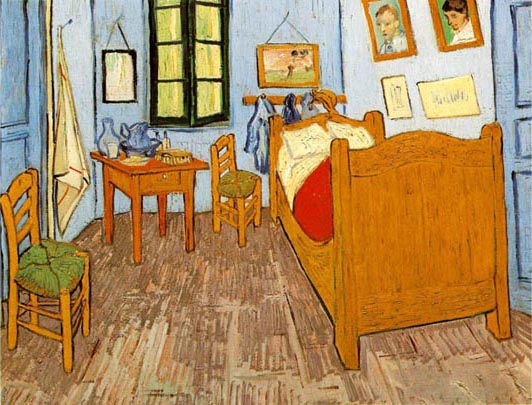
Present simple
Read the text about differences between boys and girls at school. Complete the text with the correct form of the verbs in the box.
exist like score reach explain punish believe
Are girls better students than boys?
Most people think that girls are better students than boys. In England, girls a………score.. higher marks in tests in most subjects and at most ages. At the age of seven , 88% of girls b………………the expected level for their age, but only 80% of boys do. By the age of 11, the difference is 80% to 69%, and the gap is wider at 14 years old. A similar situation c………………in the USA and many other countries.
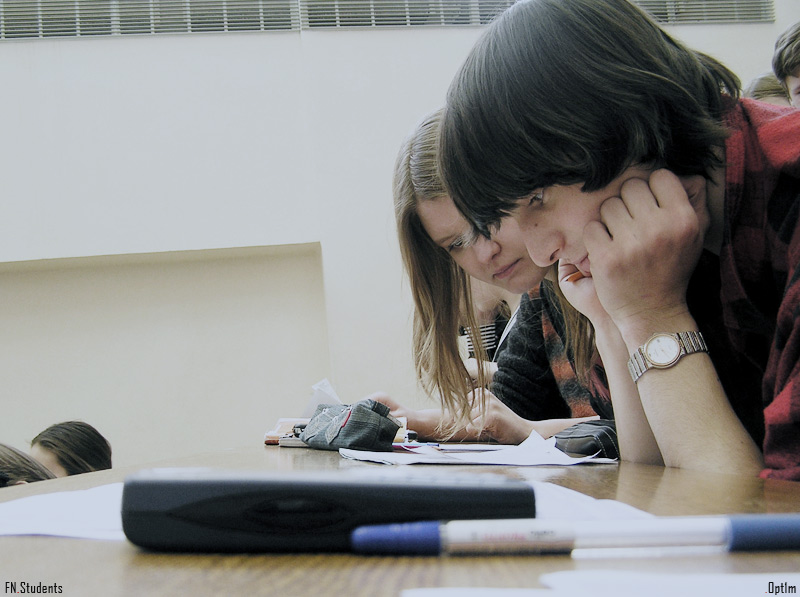
However, two American researchers, William Draves and Julie Coates, d……………… that it is not the boys who are the problem, but the schools. Their book, Nine Shift: Work, life, and education in the 21st century e………………that in fact boys are better prepared for the future. Boys are more interested in computers and the Internet. They f………………taking risks, and thinking about ways of making money and teamwork – things that are important for success at work.
The problem is that schools g………………boys for this behaviour because they are bad at listening and following instructions.
Present continuous
Complete the text with the present continuous form of the verbs in the box.
cut get increase cause change melt rise have
Global warming
Power stations, cars and factories produce carbon dioxide (CO2). Trees and plants change in back to oxygen, but we a……are cutting…….down trees in the Amazon rainforests, so the amount of carbon dioxide in the air b……………… . The carbon dioxide allows radiation from the sun to enter the atmosphere but not to leave it. This c……………… the atmosphere to heat up. Scientists think that the polar ice caps and glaciers around the world d……………… .

This is creating more water and the level of the sea e……………… . In many parts of the world there is a possibility of floods on land near the coast. In general, the world’s climate f……………… . This means warm areas g………………colder winters, and previously cold areas h………………warmer.
Past simple
1. Complete the text with the past simple form of the verbs in the boxes. They are all regular verbs.
Sir Isaac Newton: scientist and mathematician
die change provide
design use publish Isaac Newton was born on December 25, 1642 in Woolsthorpe, near Grantham in Lincolnshire, England. He was born in the same year that Galileo a……died……. . Newton is probably the most important scientist in history. His work on mathematics and physics b……………… a basis for modern science, and his ideas c……………… the world.
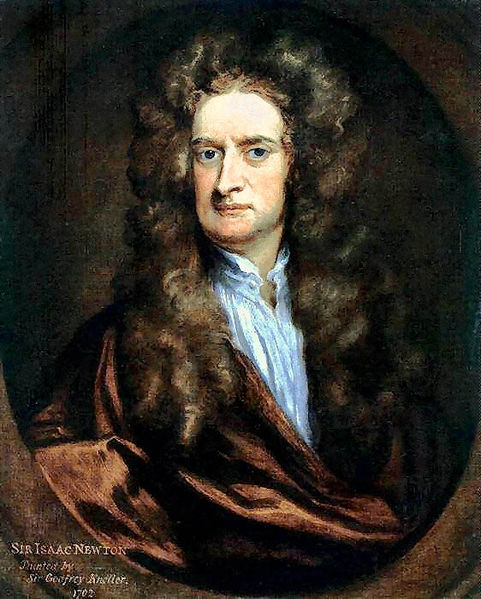
Newton d……………… his work in two books, Opticks and Principia. These contain his laws of motion and gravity. He e……………… these laws to predict the movements of the stars, and the planets around the Sun. He also f………………and built the world’s first reflecting telescope.
produce live study move
Newton g………………at Trinity College, Cambridge, from 1661 to 1696. In this period, he h………………most of his important work. Then, in 1696, he i………………to London, where he j………………until his death on March 20, 1727.
Past simple
2. Complete the text with the past simple form of the verbs in the box.
get spend play conclude stimulate compare look find
Video games
Ten years ago, studies a……concluded……. That players of video games were very intelligent and motivated people. They b……………… good results at school and at work. In those days, video games were quite simple, so what about the more complex games today?
Many children start to play video games at seven. For most of them this is not a problem, but some of them become addicts. A recent study of children aged 13 and 14 c……………… that almost a third played video games daily. Seven per cent d……………… at least 30 hours playing every week. Addiction to games can lead to other problems such as stealing money to buy new games, failing to do homework or not going to school.
In another study, scientists at Japan’s Tohoku University e……………… at the brain activity of hundreds of students as they f……………… a Nintendo game. They g……………… this with the brain activity of other students doing maths. The results were surprising. The computer game only h……………… those parts of the brain related to vision and movement, but not parts of the brain which are important for behaviour, memory, and learning.
Past continuous
Put the verb in brackets into the past simple or past continuous.
William Tell
This is the legend of William Tell, the national hero of Switzerland. There was a very cruel ruler, Hermann Gessler. One day his soldiers arrested William Tell and his son. Gessler a (know)……knew……. that Tell was an expert with a crossbow. He took Tell’s son and put an apple on his head. He b (order)……………… Tell to shoot the apple.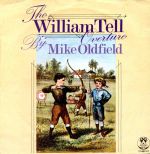
Tell took two arrows and c (put)………………one in his crossbow. He aimed carefully
and hit the apple without touching the boy. While the people d (cheer)………………
Gessler asked Tell about the second arrow. Tell said, “It’s for you.”
Gessler was very angry and decided to take Tell to his castle on the other side of Lake
Lucerne. While they e (cross)………………the take a storm started and Tell was able to
escape. Later, when Gessler and his soldiers arrived at the castle, Tell f
(wait)………………
for them there. As they g (walk)………………along the path to the castle, Tell h
(jump)………………out. With his crossbow and the second arrow, Tell i (kill)……………
Gessler. Tell’s example encouraged his people to fight for their freedom.
Present Perfect
Underline the correct form.
The arts
The world famous author of the Harry Potter books, JK Rowling, was born in 1965 in England. She a studies / studied / has studied French at Exeter University and then b works / worked / has worked as a bilingual secretary. When she was 26 she c moves / moved / has moved to Portugal where she d teaches / taught / has taught English and e works / has worked / worked on a story about a wizard. She f returns / returned / has returned to the UK and g lives / lived / has lived in Scotland since then. For a while she h teaches / taught / has taught French but since the first Harry Potter book was published she i makes / made / has made her living from writing. In fact, she is at the top of the best sellers lists and j is / was / has been for several years. JK Rowling says she k enjoys / enjoyed / has enjoyed writing stories since she was a child and it is only now, after many years of hard work, that she l achieves / achieved / has achieved success.

Present Perfect Continuous.
Underline the correct form.
Music
I a learned / ‘ve learned / ‘ve been learning to play the guitar since Christmas because my parents b bought / have bought / have been buying me one as a present. I c always wanted / ‘ve always wanted / ‘ve always been wanting to be in a band but I can’t sing. My teacher d was / has been / has been being very patient. I e started / ‘ve started / ‘ve been starting with a few simple chords and now I can play one song. My fingers f hurt / ‘ve hurt / ‘ve been hurting when I practice too long. Today I g practice / ‘ve practiced / ‘ve been practicing since lunch and I think I’ll have to stop soon. My parents h listened / have listened / have been listening to me and I think they want me to stop as well!

Have (got)
1.Complete the text with the words in the box.
to have have having have got haven’t got has have got
Bath or shower?
According to the results of a survey by a soap manufacturer, the shower is much more popular than the bath. This is mainly because people find it quicker and more economical a……to have……. a shower than a bath. However, even in Spain, one of the ”cleanest” countries in the survey, only 43% of the population b………………a shower every day. The average Spaniard c………………five showers a week, with 20 % d………………a shower just once a week. The survey also showed that practically 100 % of houses e………………at least one shower, and that around 50 % f………………two. There are still some houses (ten per cent) which g……………… a full-sized bathtub, although this figure is decreasing.


Have (got)
2.Read the encyclopedia entry on Brazil. Then complete the dialogue with the words in the box.
has has has has hasn’t have have got got
A. What about Brazil? Brazil’s a……got……. a huge population. B. Yes, it’s also a huge country, so it b………………quite a low population density – only 20 people per square kilometer. A. So people are very spread out. B. Yes. It c……………… five regions. The north d………………got a very high population.

A. Because of the Amazon. B. Yes, it’s all tropical rainforest. A. What about Rio? B. Rio and Sao Paulo are in the south east and they e………………the highest population densities, of course. There are a lot of people and they don’t f………………much space – that’s why the poorer people build houses on the sides of the hills. A. Don’t they call them “favela”? I saw something about them in a magazine.
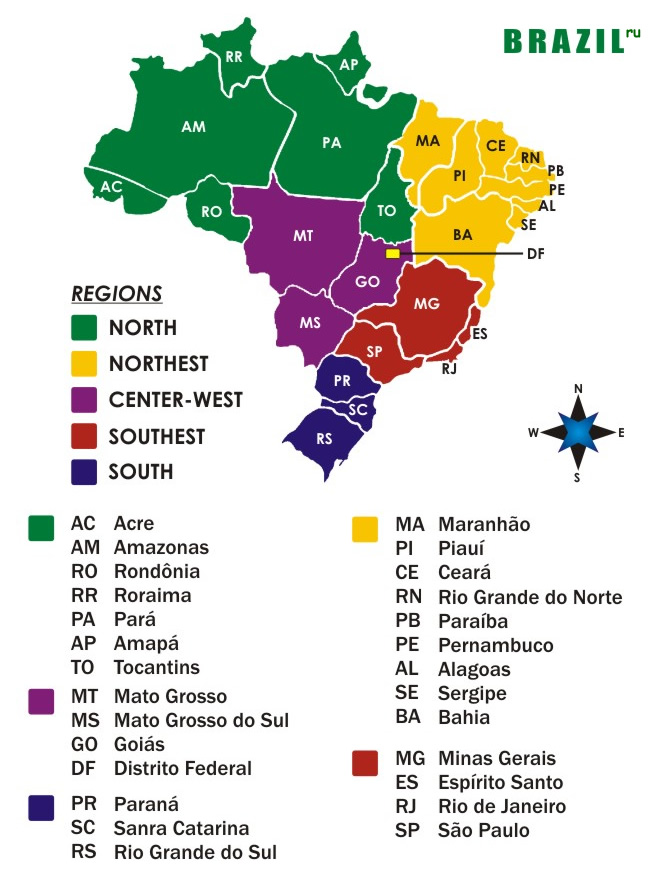
B. Yes, a lot of famous football players come from them. A lot of people live in the south too. It g………………good agriculture, and the industries in the area are growing fast.
A. That leaves one more region.
B. Yes, the centre west of the country. This region h………………the capital, Brasilia, but it’s still i………………a very low population. That was partly the reason for putting the capital there – to attract people to the area.
Brazil
Overall pop. Density: 20 people/km2. Varies from region to region:
North – Amazon river and tropical rainforest; very low population density.
North East – one in three Brazilians live here; problems with water supply; decreasing population.
South West – Rio de Janeiro and Sao Paulo; economic centre of country; highest population density.
South – high population density because of good agriculture and growing industry.
Centre West – low population density, but growing because Brasilia, the capital, attracts people to the area.
Answer Key
Оборот there is(are)
a There is b It is c It is d There is e It is
f there are g there is h There is i there are
j there is k there are l they aren’t m there aren’t
n it isn’t
Present simple
a score b reach c exists d believe e explains
f like g punish
Present continuous
a are cutting b is increasing c is causing d are melting
e is rising f is changing g are having h are getting
Past simple
1. a died b provided c changed d published
e used f designed g studied h produced
i moved j lived
2. a concluded b got c found d spent e looked
f played g compared h stimulated
Past continuous
a knew b ordered c put d were cheering e were crossing
f was waiting g were walking h jumped i killed
Present Perfect
a studied b worked c moved d taught e worked
f returned g has lived h taught i has made j has been
k has enjoyed l has achieved
Present Perfect Continuous
a ‘ve been learning b bought c ‘ve always wanted
d has been e started f hurt g ‘ve been practicing
h have been listening
Have (got)
1. a to have b have c has d having e have got
f have got g haven’t got
2. a got b has c has d hasn’t e have f have
g has h has i got
Список литературы
1.Пассов Е.И. «Коммуникативный метод обучения иноязычному говорению», М., «Просвещение», 1991.
2.Опойкова О.Н. «Коммуникативные приемы обучения грамматике на уроках английского языка», «ИЯ в школе», 2005 №8.
3.Павлова Е.А. «Коммуникативный подход в обучении грамматике», «ИЯ в школе», 2008 №6.
4.Поршнева Е.Р., Спиридонова О.В. «Грамматические концепты и способы их построения при изучении иностранного языка», «ИЯ в школе», 2008 №6.
5.Ситнов Ю.А. «Грамматические знания, навыки и умения в свете теории когнитивизма», «ИЯ в школе», 2005 №7.
6.Мильруд Р.П. «Навыки и умения в обучении иноязычному говорению», «ИЯ в школе», 1999 №1.
7.Щепилова А.В. «Когнитивный принцип в обучении второму иностранному языку: к вопросу о теоретическом обосновании», «ИЯ в школе», 2003 №2.
8.Simon Clarke Macmillan English Grammar In Context Essential
9.Simon Clarke Macmillan English Grammar In Context Intermediate
10.Michael Vince Intermediate English Practice
11.Malcolm Mann Laser B1 Intermediate
12.Steve Taylore-Knowles B1+ Intermediate and FCE
13.картинки на http://www.kartinki24.ru/
14.картинки на images.yandex.ru
15.картинки на lxphoto.ru
16.картинки на picture-box.ru

Нравится материал? Поддержи автора!
Ещё документы из категории английский язык:
Чтобы скачать документ, порекомендуйте, пожалуйста, его своим друзьям в любой соц. сети.
После чего кнопка «СКАЧАТЬ» станет доступной!
Кнопочки находятся чуть ниже. Спасибо!
Кнопки:
Скачать документ